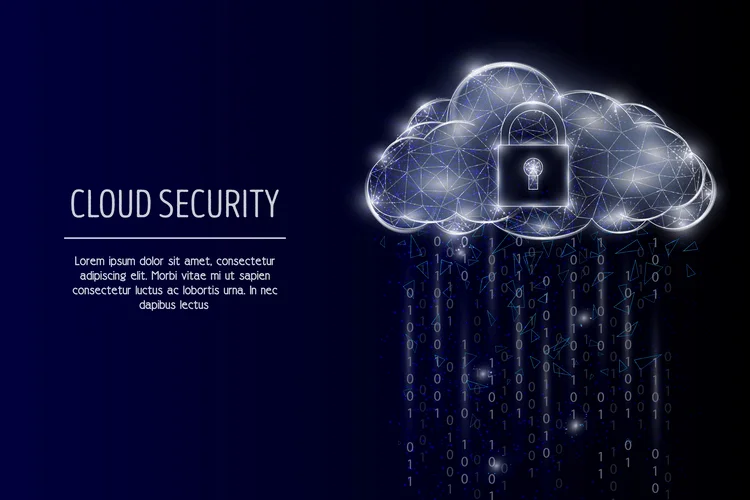Containers ensure that purposes work uniformly throughout completely different environments. This reduces “it works on my machine” issues, making it simpler for developers to write code and operations teams to manage purposes. Ultimately, this allows DevOps groups to accelerate the software program growth lifecycle (SDLC) and iterate on software program faster.
The execution environment and its scaling insurance policies are tightly built-in with the cloud platform, making it tough emigrate functions to another supplier without vital rework. Containers, then again, provide full management over the application setting. This means you’re responsible for managing and configuring every thing from scaling insurance policies to network settings.
Each tool provides distinctive options and capabilities to suit varied deployment situations and infrastructure requirements. Container orchestration is the automation of the process of provisioning, deploying, scaling, load balancing, and managing containerized functions. Looking forward, we’re seeing the emergence of sensible hybrid options that tackle the normal limitations of each paradigms. Technologies like AWS Fargate and Google Cloud Run show this evolution by offering container-based deployments with serverless operational traits https://www.globalcloudteam.com/. These platforms permit you to run containerized purposes without managing clusters while sustaining the fine-grained management over runtime environments that containers present. Containerization additionally helps summary software from its runtime setting by making it straightforward to share CPU, reminiscence, storage, and network resources.
More portable and resource-efficient than digital machines (VMs), containers have turn into the de facto compute units of recent cloud-native purposes. The topmost layer of the containerization architecture is the application code and the other recordsdata it needs to run, such as library dependencies and related configuration files. This layer may also include a lightweight visitor working system that will get installed over the host operating system. Internet of Things (IoT) devices contain limited computing assets, making handbook software program updating a fancy process.

For event-driven workloads, it leverages AWS Lambda, enabling scalable, serverless execution without infrastructure management. Containerized cargo has revolutionized the shipping business, making transporting items worldwide more manageable and efficient. The concept of containerization involves using standardized containers to pack and ship various products, simplifying logistics processes and reducing prices. This article investigates the development of containerization, its impact on global commerce, and how it has modified over time. Larger microservices architectures can typically have hundreds of microservices with each working in a quantity of containers. Deploying, scaling, and managing the interactions between that many containers isn’t a handbook job.
This suits with the short-term nature of containers as they are often deployed or destroyed with out worrying about how to persist the info they produce and depend on. And as a end result of containers include only what they specifically need, there’s relatively little difference between adding a new container and operating the appliance directly. Google Kubernetes has its personal container engine, rkt, but additionally it is a community the place customers can run different in style engines. It’s an open source host surroundings for creating libraries of purposes to share or develop. A key element of virtualization is isolation, the act of segregating sources for every software.

Prior to highly mechanized container transfers, crews of 20 to 22 longshoremen would pack individual cargoes into the hold of a ship. After containerization, giant crews of longshoremen weren’t necessary at port facilities, and the career changed drastically. Containerization is a method Operational Intelligence of virtualizing an operating system so that multiple isolated functions can run on a single host operating system. Container orchestration is the method of managing and coordinating the use of containers in a distributed system, including managing the deployment, scaling, and networking of containers. To containerize an software, a software program bundle known as an image is created, which incorporates the application’s code, libraries, configurations, and dependencies. Containerization also makes deploying and scaling functions straightforward, as all of the dependencies are packaged collectively.
Docker and Kubernetes are well-liked container technologies, generally compared and selected primarily based on their capabilities. However, each are essentially related as they enable seamless functioning. It’s primarily a toolkit that makes containerization simple, safe, and fast.
Instead of maintaining excess server capability throughout off-peak hours, serverless ensures sources are provisioned dynamically, scaling up and down as wanted. In distinction, containers offer a more traditional approach to monitoring and debugging, where you management the environment and can arrange more complete monitoring options. The commonest containers used for containerized cargo are dry, refrigerated, flat racks and open tops. By embracing new applied sciences and sustainable practices, businesses concerned in international commerce can stay forward of the curve while contributing positively in path of a greener future.
Public containerised transport113 is the idea, not but applied, of modifying motor automobiles to function private containers in non-road passenger transport. As the ship listed, some containers were lost, while others had been held on board at a precarious angle. Each has its strengths and weaknesses, so choosing the right one is crucial.

Discover how a hybrid cloud technique can drive flexibility, security definition of containerization and progress for your small business. Explore expert insights and real-world case research that show why leading enterprises are making the swap. Download the CrowdStrike 2024 State of Application Security Report and study more about the greatest challenges in software security. The container might seem very ‘low tech’ but it reveals that even low tech innovations can have massive benefice when applied internationally. Shipping terms, Incoterms, dictate responsibility and prices between sellers and consumers. Refrigerated containers, or reefers, are essential in preserving perishable items like fruits, greens, meat products, and prescription drugs throughout their journey.
Traditionally, to run any software on your pc, you had to install the version that matched your machine’s operating system. For example, you wanted to put in the Windows version of a software package on a Windows machine. However, with containerization, you’ll have the ability to create a single software bundle, or container, that runs on all types of devices and operating techniques. Netflix makes use of Titus, its in-house container administration platform, to deploy and scale its microservices efficiently, handling millions of containers weekly.
A flat base with collapsible end walls on both facet can accommodate heavy equipment such as construction supplies or massive automobiles by allowing simple loading from above using cranes or other lifting gear. Furthermore, we’ll look at the benefits that have made containerized cargo a dominant pressure in both international trade and logistics whereas addressing some challenges and considerations businesses face today. Finally, we take a look at future developments and improvements shaping this business and solutions to incessantly asked questions about containerized cargo. The container platform is the set of tools that construct, run, and distribute the containers themselves.
Containers are an different to coding on one platform or operating system, which made shifting their software tough since the code may not then be suitable with the brand new environment. This may result in bugs, errors, and glitches that needed fixing (meaning more time, much less productiveness, and lots of frustration). Container solutions run and scale-up containerized workloads with safety, open source innovation, and fast deployment. First and foremost, container security insurance policies must revolve round a zero belief framework. This mannequin verifies and authorizes every user connection and ensures that the interaction meets the conditional requirements of the organization’s safety insurance policies.
Hence, sturdy freight companies, mixed with environment friendly warehousing, stock administration, and demand forecasting, are pivotal for making certain that merchandise reach shoppers in a well timed and cost-effective method. Despite enhanced security measures, containerized cargo remains weak to theft and piracy. Thieves target high-value goods corresponding to electronics or luxurious items, while pirates usually hijack complete ships for ransom. To mitigate these dangers, businesses should contemplate implementing extra safety measures, like employing armed guards on board or utilizing superior monitoring techniques. The strategic importance of these port hubs goes past their shipping capacities.
Leave Comment